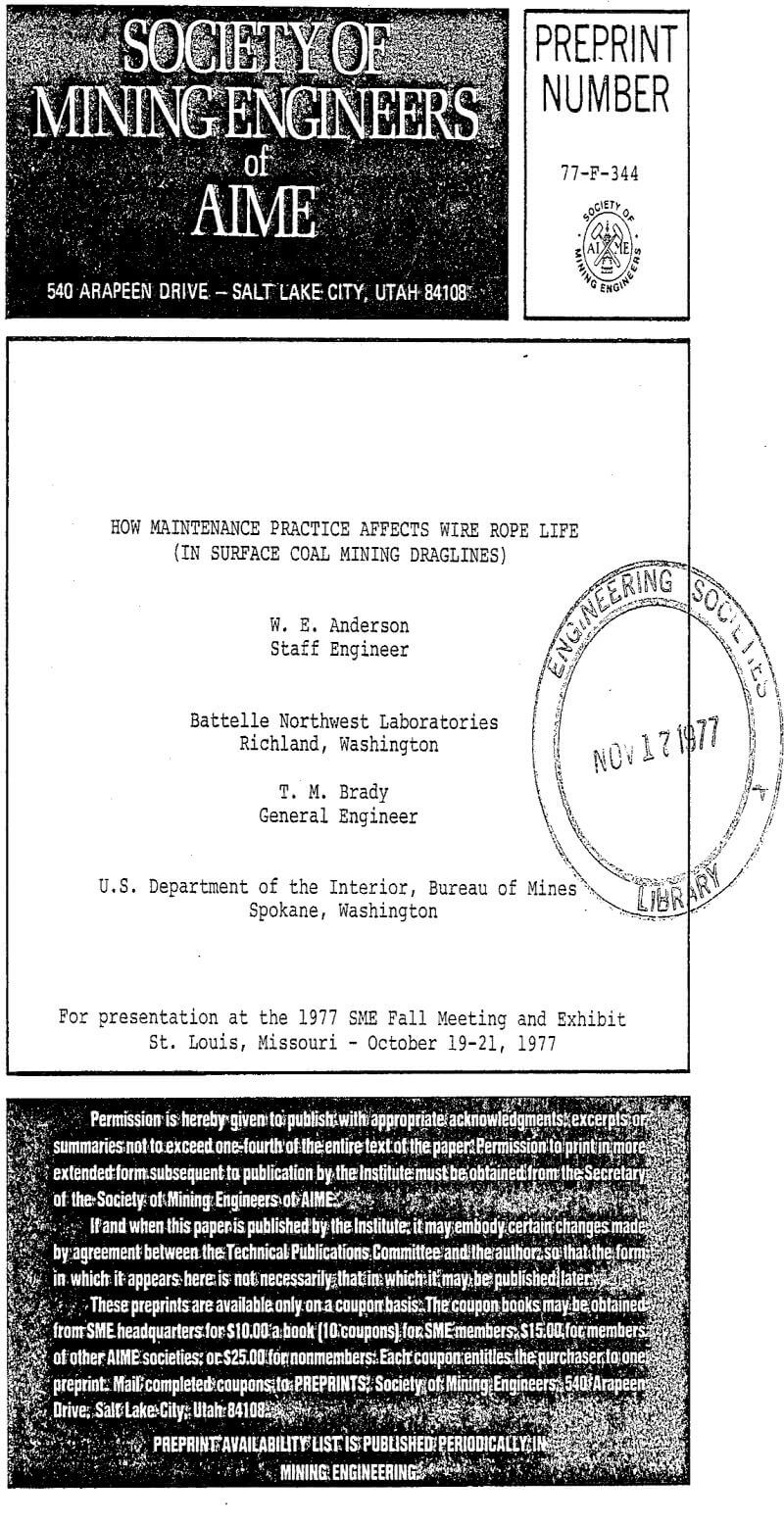As part of a larger study to identify factors influencing the practical operating life of wire rope used on large draglines in surface coal mining, field trips to operating surface coal mines were made during late 1975. Wire rope performance information was obtained from personnel at thirteen mine sites west of the Appalachians.
Data Acquisition
During the field visits, mine operators provided rope life information about their machines. Some of the rope life data consisted of gross averages; other data was in the form of detailed records, including rope construction and manufacturer, cutoff and resocketing periods, end-for-end switching, and downtime for rope change-out.
Some form of data normalizing, however, was considered desirable. One apparently useful factor was the amount of cross-sectional wire performing the hoist or the drag function. A simple expedient was to sum the squares of the nominal rope diameters used in each function and divide that number into the total yards handled until retirement. The performance of draglines with different bucket sizes could then be crudely compared, since the normalizing factor is approximately proportional to the actual cross-sectional area of the wires in the rope (and hence the weight per unit length of rope, or, roughly, the cost per unit length).
Code 6-2
Normalized hoist and drag performance for mine 6, equipment identification -2, is plotted. This was a 40-yard class dragline. Points indicate the calendar date on which each rope was retired, versus the normalized performance of each pair of ropes (hoist and drag were two ropes, 2-7/8 inches in diameter).
Mine records indicated hoist rope damage in the summer of 1974; that information is noted beside the symbol. In a similar manner, a used hoist rope was put on as drag rope late in 1974; that item of information is also noted.
Average normalized performance of the hoist ropes may be visually estimated as about 300,000 units, while the drag rope performance was about 125,000 units. There is some variation, depending on whether the damaged rope or the used rope data are considered in calculating an average.
Downtime Due to Rope Changes
The downtime and consequent lost production due to stoppages for rope change-out or resocketing varied considerably from site to site. In one case we timed the drag rope change-out on a 60-yard class machine with three 3/8-inch ropes; it took one hour and fourteen minutes from setdown to bucket pickup. We judged less than twenty man-hours were required for the complete operation.
At another site, we were told that the change-out of drag or hoist ropes (on a 100-yard class bucket) would take the better part of one shift and would involve at least five men. We estimated that, on the average, changeouts, resocketing and swapping ends were taking about 105.6 hours/year; total effort for the typical 60-yard machine was about 500 man-hours for hoist, drag, and dump combined.
Detailed Records
We understand that a change in drag rope maintenance practice was made in late 1969; this action is apparently reflected in the performance data. By permission of the operator, we can report that one change was the replacement of wooden slide blocks in the cab with rollers. A previous AIME paper also reported improvement in rope life because of roller modification. Another change was a shutdown at nearly every lunch period to walk the drag rope, burning off any broken whiskers which were observed.
A change in hoist rope lubrication was reportedly effected in 1970; this consisted of applying a penetrating fluid in a systematic manner. Again, results bear out the value of the changed practice. As mentioned above, the hoist rope is somewhat smaller than “normal” trend, so some of the generally improved performance may be traceable to this aspect. However, we do not have available information on the type of overburden or other site details at this time, and these factors may account for some portion of the unusually good performance.



